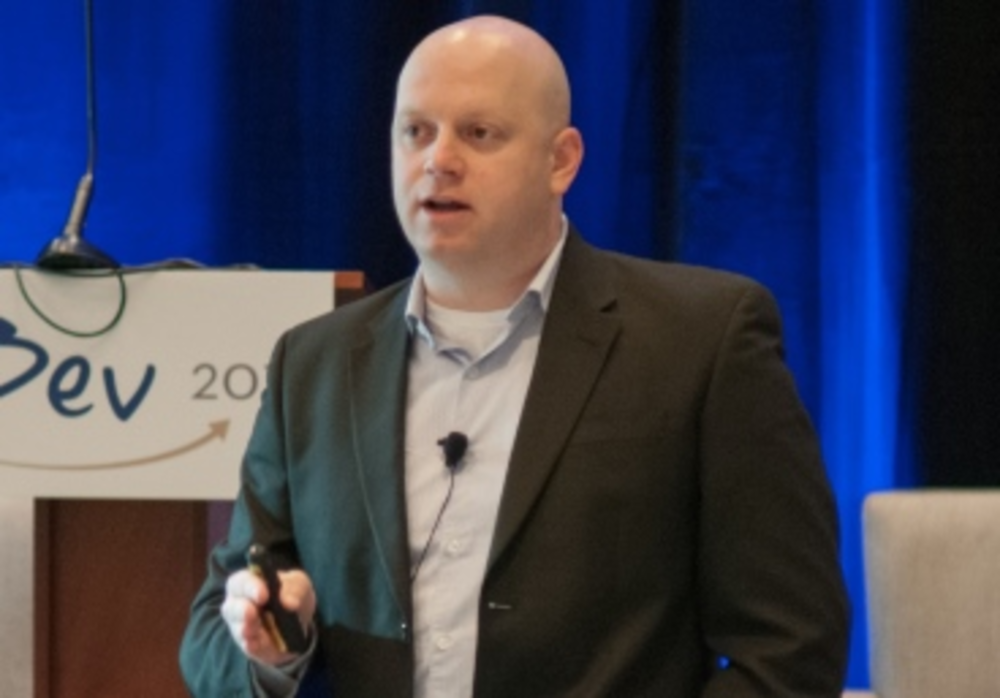Right now, enterprises across the country are desperately seeking examples of the rare right- and left-brained species known alternatively as data scientists or marketing engineers. Steve Surman may well be the prototype. Surman took his degrees in engineering, computer science, and business and put them to use as a digital marketer for Procter & Gamble and Anheuser-Busch. When the current global head of digital strategy for Mead Johnson Nutrition showed up at the eBev conference in Denver to scare attendees straight about digital, they listened. Surman’s sermon:
Myth #1: Digital technology changes so fast. This is absolutely not true, Surman asserted, noting that HTML 5, first proposed as the new standard for multimedia publishing in 2008, has yet to be formally adopted as the standard even though it is widely used. What’s changing fast is consumers’ access to technology. “We often convince ourselves we can’t keep up with technology,” Surman said. “Put that to rest.”
Myth #2: There’s this new thing called Big Data. Don’t obsess about Big Data, Surman counseled. Think about what segments you’re trying to address and what questions you’re trying to answer and go get the data you need to do the job. “You’re looking for a needle in a haystack. Don’t pile on more hay before you search the pile already in front of you,” he said. “Look for the needle in the haystack closest to the needle factory.”
Myth #3: Our brand has a digital strategy of one-to-one communication with customers when and where they want to engage. Everybody has this strategy and it never happens, Surman said. It’s possible in only one place—call centers—but few marketers focus their efforts there. “Communications in all other channels are rule-based, they’re customized for a segment and not truly personal,” he observed. “Scrap the digital strategy. What you need is an engagement strategy.”
Myth #4: Our brand needs a mobile app. Mobile is a channel, not a brand strategy. The only branded apps that have an impact are ones that serve a need. In other words, apps must be developed the way new products and services are. Surman said he’s killed more ideas for mobile apps than ideas for programs in any other channel. “Nike Plus is one of the few successful brand apps I can think of. Apps are tough. You have to find the app that people need.”
Myth #5: Our brand has to have a Facebook page. “Should Preparation H and Viagra have Facebook pages?” Surman asked the crowd, which fell sheepishly silent. Users of these products tend not to communicate about their brand experiences in social channels, so why engage with them on Facebook?
Myth #6: This campaign needs a micro-site. The truth, to Surman’s way of thinking, is that nobody needs a micro-site for anything, especially since most brands have well-imagined websites to lead people to. “Put your content on your brand website and take those micro-site dollars and use them to scale your existing channels,” he said.
Myth #7: Our digital lead doesn’t need to know code. “You should have at least one person in your organization who knows code,” he stressed, “It’s possible there’s a faster, less expensive solution you’re your agency hasn’t suggested and it’s equally possible you’re simply being overcharged.” The value of an inside techie lies not in writing code for campaigns, but in knowing what’s possible, what it costs, and how long it should take. “Without one, you are never going to stumble onto something like Nike Plus.”
Myth #8: We can’t ignore this new digital thing. No, it’s likely you probably can, Surman posited, at least for now. “Often senior execs see what competitors are doing in a particular space and say, ‘We’ve got to do something in this space also,’” he said. “All of a sudden you’re present in half a dozen channels that you can’t scale because budget is short.” If you want to stay in them, make the budget bigger, but only after you’re sure you have enough budget to scale your existing channels.
Myth #9: We can measure this digital thing; we can’t measure this digital thing. Marketers’ understanding of what can and can’t be measured is limited to their understanding of the data. Email is a great example. If you look at webmail usage, email usage is down considerably. But that’s just webmail. “People read their email on their smartphones the moment they see the envelope flashing in their status bar,” Surman pointed out. “Email usage is at its highest level ever.”
Myth #10: We don’t understand this digital thing. Don’t be so hard on yourselves, because you do, Surman said, you really do. He counseled marketers at eBev to stop treating digital as something special or scary. “It’s just another tool in your marketing tool kit,” he said. “Identify the consumer experience that you want to deliver, that your consumer will value, and that will deliver results for your business. Then determine how best to execute that experience in the digital space.”








